|
Advertisement
|
The Big Board
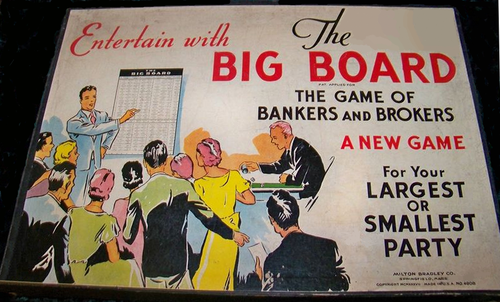
DescriptionReleased toward the end of the Great Depression in 1937, The Big Board, like many games released during this time frame, reflects an America, and the world, pulling itself out of economic chaos. The lure of trading large sums of cash with the possibility of striking it rich ran deep in the collective unconscious across the globe. The box includes 835 shares of stock in each of nine different corporations with the following denominations/counts: 1/10, 5/5, 10/5, 50/5, 100/5. This is at odds with the instructions which call for 435 shares. It also includes approximately $110,000 in paper money in the following denominations: $5, $10, $20, $50, $100, $1,000 and $5,000. Again this is at odds with the instructions which call for $147,600. Included is one pair of standard dice, a dice cup, 9 wooden Price markers, and one large board marking the rising stock prices. The Big Board “represents the quotation board as used in a broker’s office”, and attempts to “represent in a realistic manner the fluctuation of stocks, as on the New York Stock Exchange.” Nine stocks are available for trading. Each player starts with $5,000.00. One player is selected as the supervisor of the treasury and stock certificates. The instructions suggest that this player throws the dice and moves the price quotation markers, but is “not the banker and does not participate in the profits or losses of the BIG BOARD.”, effectively removing the player from the game. For those who don’t wish to be left out of the game, an easy house rule could fix this by allowing one person to be banker and perhaps shifting the throw of the dice from player to player. The game begins with the price markers on each of the stock spaces marked PAR. The market is now open and all players may purchase one or more shares of as many stocks as they wish. The dice are then rolled for the first stock, with the operator moving the marker upward the matching number of spaces rolled. If the marker lands on a value space, the price is set, if it lands on a “Down To” space, it is moved to the corresponding lower value and the price is set there. Players may now buy or sell values of this stock. These phases are continued for each stock, with the dice returning to the first stock when the others have been set. During intervals, transactions can occur at the current price of any stock. The game can end in several ways: at a set time determined by all players at the start of the game (suggested by the game designers as a more realistic simulation of stock activity from day to day), or when 1 player has lost all money or the treasury is exhausted, or even when 1 player has made a “certain amount of money over and above that which he started with”. Game DiscussionsAdd CommentYou need to be logged in to comment. Insert Bullet List Please enter at least one item. Item: Item: Item: Item: Item: Insert Numeric List Please enter at least one item. Item: Item: Item: Item: Item: Insert Link Please enter the link of the website Optionally you can add display text Insert Email Please enter the email address Optionally add any display text Insert Image Please enter the link of the image Insert YouTube Video Please enter the link of the video MarketplaceNo listings at the moment. Do you own this game? Click here to list it for sale.
|
Best Sellers
Board Games
|
||||
Latest Searches: Wilkesboro-opoly | Dice+town | Okechobbee opoly | Destination scotland | Monopoly+the+american));(SELECT+*+FROM+(SELECT(SLEEP(32)))treo)# | Farmall tractor monopoly | Nerf rival guns | Operation+game+parts | Unfathomable | star wars vintage collection | Carson+monopoly | peter rabbit radish | Fantasy flight | Animal | Monopoly gamer pack | Marvel Avengers: Endgame Titan Hero Power FX | Canadian rush band rock and roll | Jackson-opoly | monopoly canada | Idaho Opoly | The Legend of Drizzt Board Game | Playskool busy gears | Don’t+spill | the colonists | Boccerball | cowboy+checkers | Monopoly+divided | UglyDolls+OX+Mini+Figure | POWER RANGERS MIGHTY MORPHIN POWER MORPHER | scrabble slam
All Rights Reserved

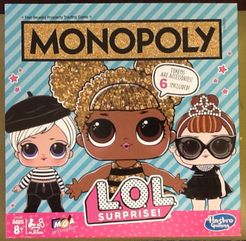
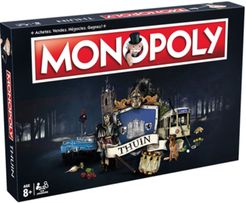
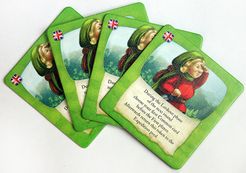
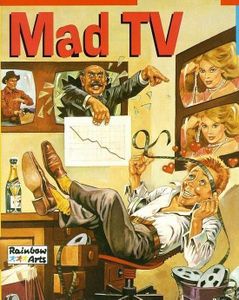
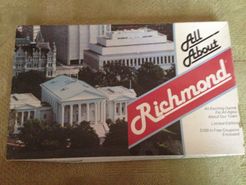
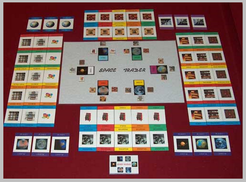
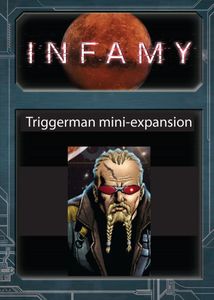
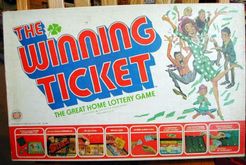
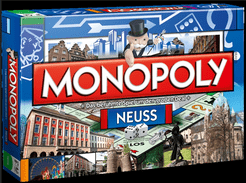
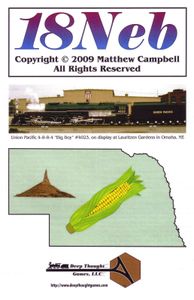
Comments (0)